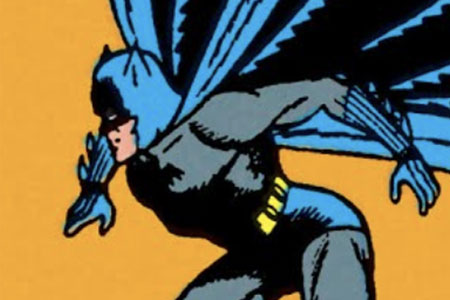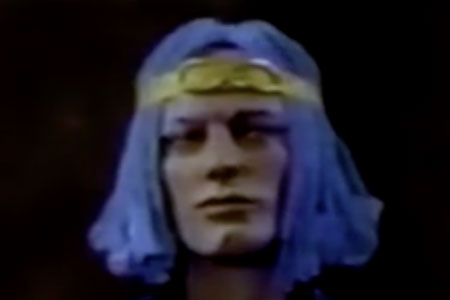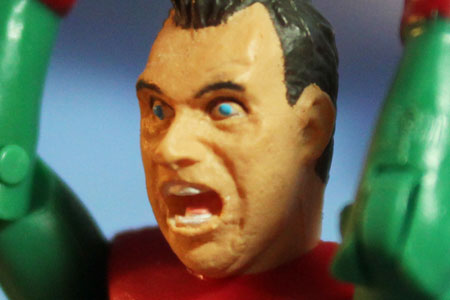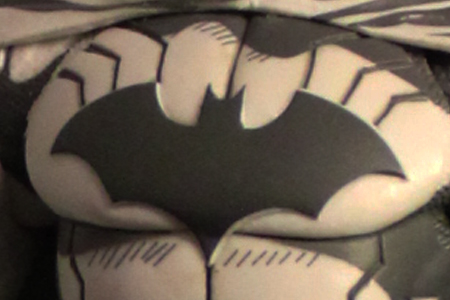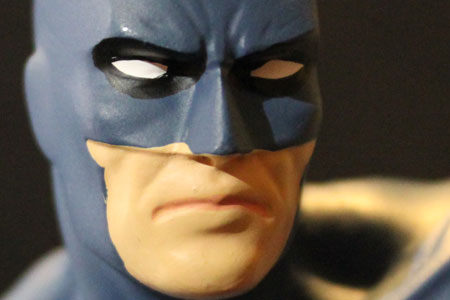
Batman #3 has a cover date of September 1940, or simply, “Fall Issue”. America was about to enter World War II; Captain America didn’t exist yet, nor did Wonder Woman. And while Superman was a decidedly patriotic comic from its 1939 inception, most American comics were still just showing the first inklings of patriotism. Instead of fighting international threats, 1940s Batman was still focused entirely on street-level thugs and the occasional vaguely-superhuman villain, mostly within the confines of his city – which, as of Batman #3, still had no name.
To 1940s Batman, still light-hearted and a bit of a goofball, true patriotism was simply being the best person you could be – and he’d break the fourth wall to tell you. Be good, guns are bad, and, you know, only kill someone when you absolutely have to.
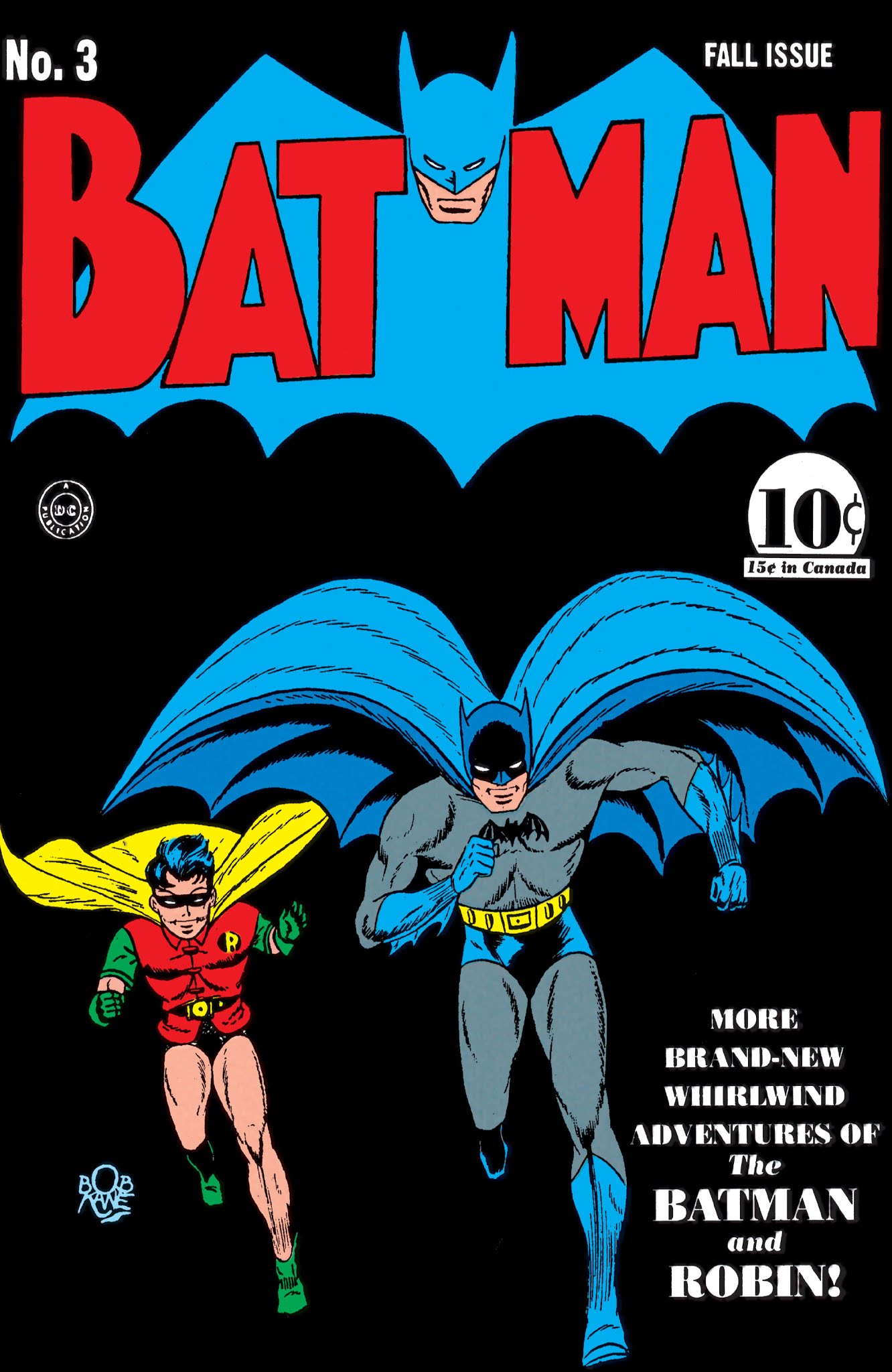
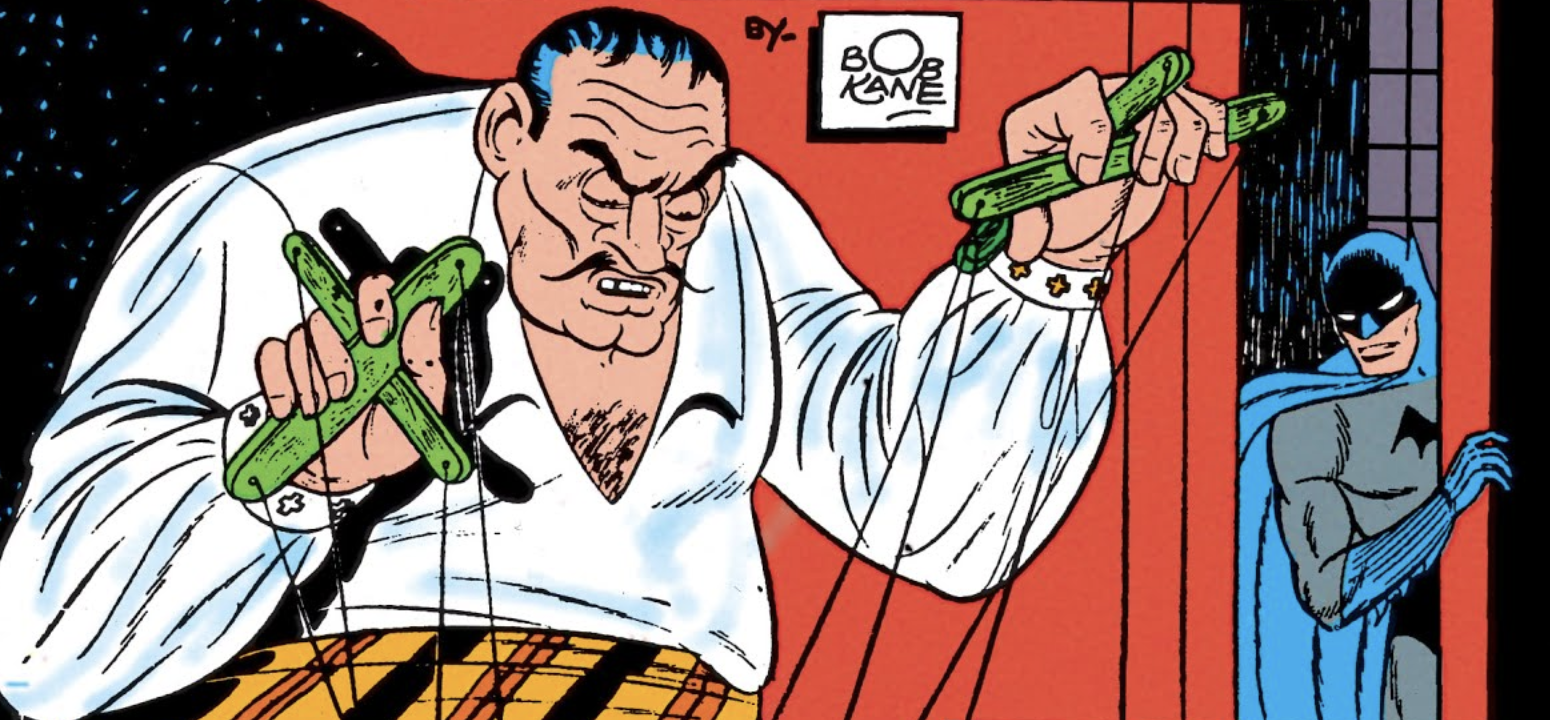
One Batman villain you don’t hear much about is Dmitri, the Puppet Master, but in 1940, he was a serious threat. With nothing but a scratch from a needle full of thought serum, Dmitri was able to mind-control a seemingly endless number of serumed-up people from many miles away by manipulating his own “thought waves”.
Dmitri isn’t to be confused with Jordan Weir, another DC Comics character called Puppet Master introduced in the ’60s to Green Lantern. That guy had a hypno ray, and didn’t have a wicked mustache OR a dense, oily thicket of chest hair. Point: Dmitri.
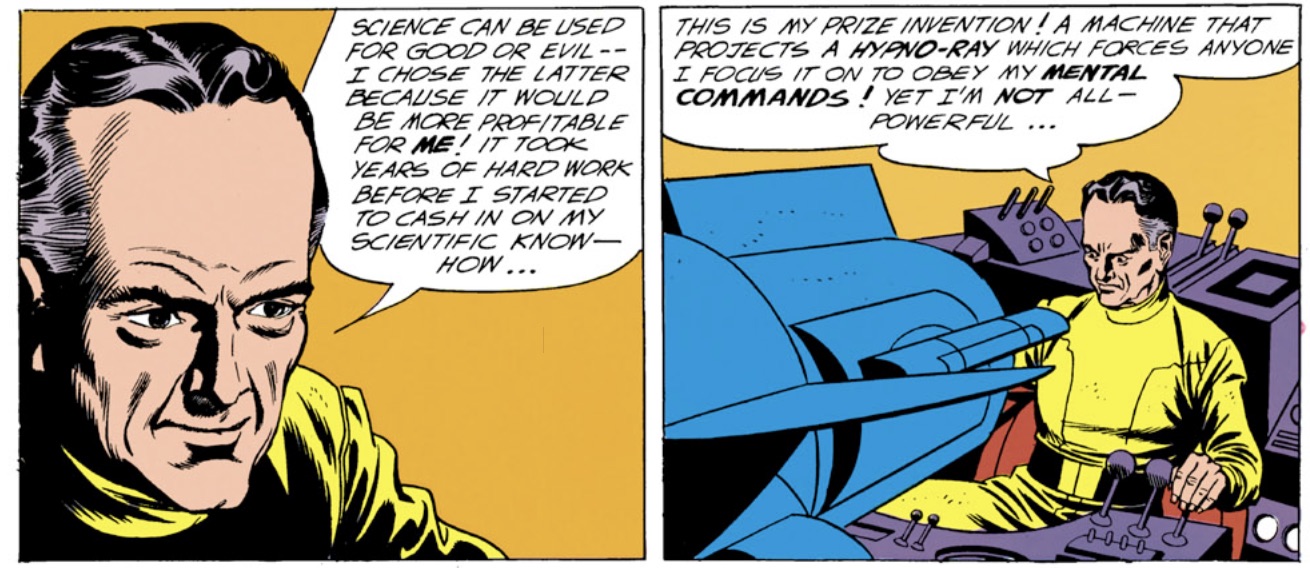
Dmitri uses this thought-wave ability on the prominent scientist, Dr. Craig, who holds the secrets for atomic energy in a crummy vault in his apartment. But rather than just kidnap and threaten Dr. Craig outright, Craig is dosed with the thought serum in a half-hearted tussle with one of Dmitri’s minions before Batman breaks up the fight. All is well, until Craig is hypnotically summoned to the Puppet Master, science-y plans in hand. The grand plan? The treasonous Puppet Master wants to sell these atomic secrets to the highest bidder, probably a foreign power which would use them to create weapons of war. At this point in time, it’s a plot that just bordered on science fiction.
This story was written five whole years before the first atomic bomb was dropped, and two years before the first nuclear reactor was built as an initial step of the Manhattan Project. Nuclear fission had only been discovered in 1938, so the whole atomic energy thing was a little magical, a little scary, and probably carried a lot of mystery for the average person, not unlike creating tiny Hadron-collided black holes is for us today. Nuclear secrets? Sure, a villain would use his weirdo hypnosis powers to get his hands on those.

Dmitri builds a small puppet of Dr. Craig, presumably as a means to control his actions, but later, Dmitri doesn’t seem to need to build an effigy to use his powers over a mass of people he enlists to help him steal a second military item: the Voss Rifle. So, maybe it’s just a hobby for him to make little dolls of people whose lives he effs up.
This Puppet Master’s whole deal is a less messy version of Marvel’s own Puppet Master, Philip Masters, introduced over 20 years later. Phil uses radioactive-slash-magical clay from a mystical mountain, and some kind of unexplained psychic ability, to control people. By the 1960s, Marvel’s Puppet Master should have known better than to mess with radiation; but in 1940 radiation sickness wasn’t even a thing yet, and a dose of radium was just as healthy as a breakfast of butter, a cigarette, and a cup full of muscle-making raw pork. Charles Atlas says so.
So, Dr. Craig has atomic plans in hand and is about to deliver them to Puppet Master’s minions, but Batman intervenes. A fight ensues, and the minions flee, only to enact the second part of the Puppet Master’s plan the next day: “accidentally” scratching as many people as they can with thought serum-filled needles. Meanwhile, Dr. Craig is cured by Batman’s apparent medical expertise. After trying everything else (probably just asking nicely, triple-reverse hypnosis, a healthy cup of raw pork, and/or a few Batman-sized slaps to the face) , they just shock the guy. Problem solved.
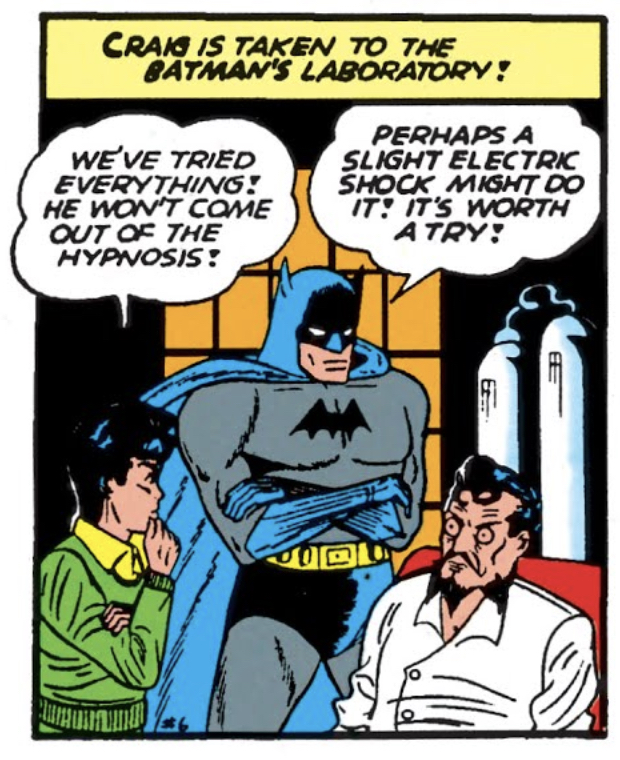
Later that night, back in 1940, the train carrying the Voss Rifle is intercepted by Puppet Master’s newly-serumed minions. Tear gas incapacitates the soldiers on guard, and yet another fight ensues; this time, Batman is needled, making him subject to Puppet Master’s mind control… even without Puppet Master knowing Batman’s true identity. It just works. Were one to analyze this phenomenon against modern-day Batman, it would confirm that Batman is so deeply imprinted on Bruce Wayne’s psyche that Batman is actually the true identity of this man; and Bruce Wayne is his disguise, and this is why Dmitri summoning “batman” works without question. But in 1940, it’s pretty obvious that Bob Kane and/or Bill Finger just didn’t really think about it. There were deadlines.
Batman is hypnotized into stealing a bunch of jewels. It’s not that Puppet Master wants the jewels; he just wants to frame Batman for the theft, which is some next-level villainy. However, Puppet Master underestimates Batman, and the policemen who attempt to foil the robbery have a display case tossed on top of them.
And then… as Robin attempts to stop the robbery in his own naive way, we get the backhand heard ’round the world. Well, the first one, at least. Probably one of many.
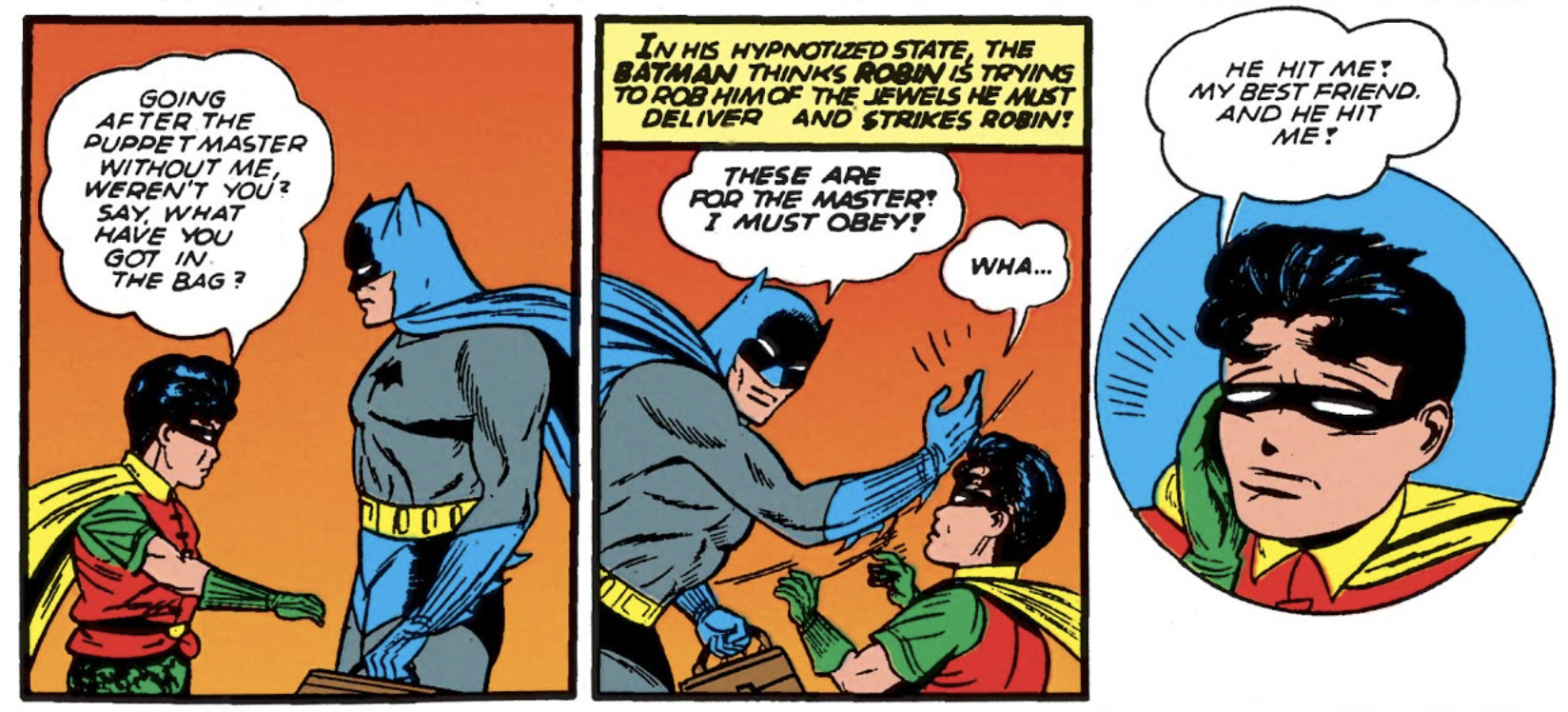
It’s enough to cause Robin to one-punch Batman into unconsciousness. Robin takes Batman home and shocks him back into a non-hypnotized state. Later, Batman shows up at Dmitri’s hideout and punches him so hard that, according to Batman, he’ll never feel anything again. Case closed.
Batman doesn’t seem like the type to be judgmental, unless — of course — you’re some kind of scummy, gun-toting thug. Then all bets are off. But once, in 1940, Batman expressed particular glee in beating up people just because they were really, really ugly. Meet Carlson, aka ‘The Ugliest Man in the World’.
The story begins, as most Batman tales do, as Batman witnesses a fight — this time, between a horde of really ugly dudes and a dopey Irish cop named McGonigle. Dropping familiar one-liners and bon mots, Batman is quickly victorious. But seriously, get a new joke writer.
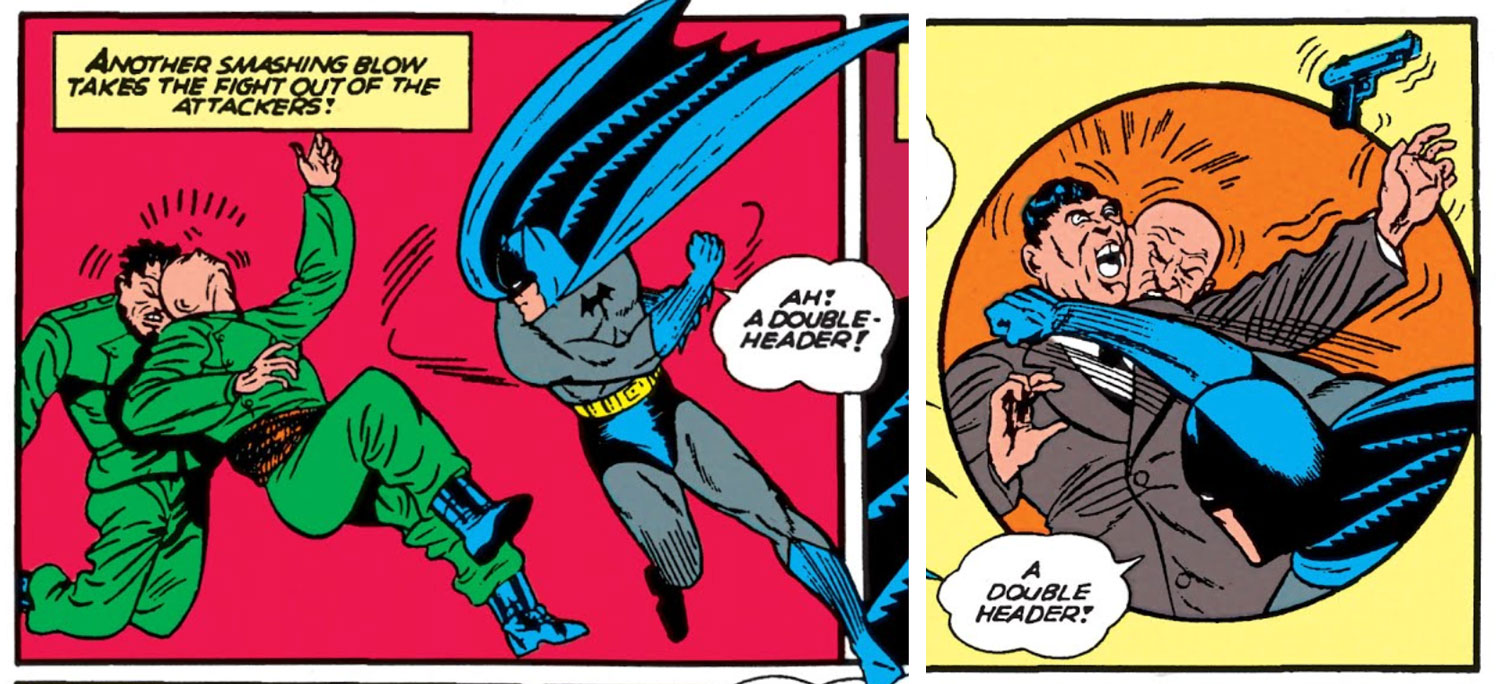
Saved from the fracas, McGonigle turns his sights on arresting the vigilante Batman, who promptly pushes the inept cop down over a fire hydrant and escapes. Thus begins McGonigle’s obsession with finding the true identity of Batman, though as a broad, vaguely racist caricature of an Irishman, there’s really no threat of Bruce being unmasked. Dude’s basically a potato who grabbed a cigar and wandered into sentience.
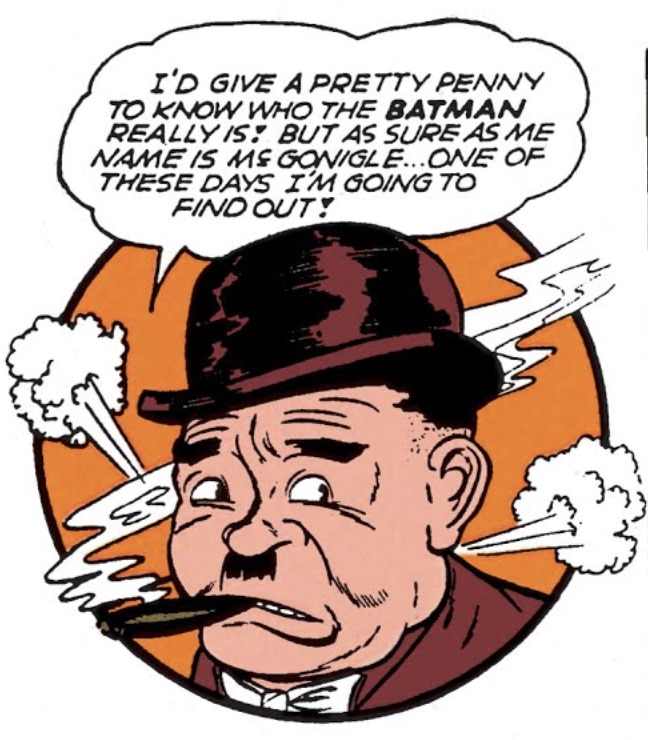 Later that night “society idler” (their words) Bruce Wayne visits some beautiful pals named Dodge and Larrimore to hang out, smoke expensive things, and drink more expensive things. Suddenly, Dodge becomes ugly. Really ugly. Downright moronic. Again, their words.
Later that night “society idler” (their words) Bruce Wayne visits some beautiful pals named Dodge and Larrimore to hang out, smoke expensive things, and drink more expensive things. Suddenly, Dodge becomes ugly. Really ugly. Downright moronic. Again, their words.
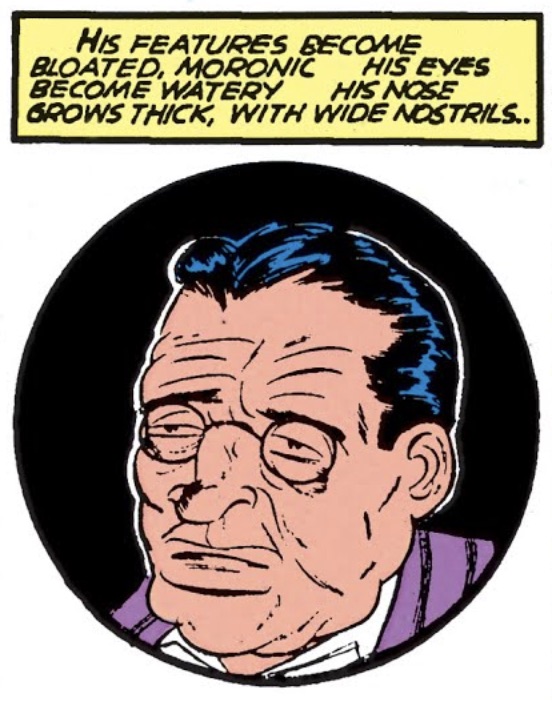 Spoiler alert: turns out that there’s a bad dude running around afflicting people with sudden-onset myxedema, or “cretinism”, a thyroid condition that causes physical abnormalities. It’s a condition that exists in the real world. And while the word ‘cretin’ would imply someone who’s just a total creep, the name of the disorder actually comes from the French, meaning ‘one who is human despite deformities’. But throughout this tale of ugly-ass dinguses, it cannot be repeated enough just how ugly they are, and how terrible it is for everyone around them, because they suffer from this deforming disorder, aka “The Ghastly Change”. Batman, you are a jerk. And you too, Bob Kane. Hypothyroidism sufferers are people too.
Spoiler alert: turns out that there’s a bad dude running around afflicting people with sudden-onset myxedema, or “cretinism”, a thyroid condition that causes physical abnormalities. It’s a condition that exists in the real world. And while the word ‘cretin’ would imply someone who’s just a total creep, the name of the disorder actually comes from the French, meaning ‘one who is human despite deformities’. But throughout this tale of ugly-ass dinguses, it cannot be repeated enough just how ugly they are, and how terrible it is for everyone around them, because they suffer from this deforming disorder, aka “The Ghastly Change”. Batman, you are a jerk. And you too, Bob Kane. Hypothyroidism sufferers are people too.
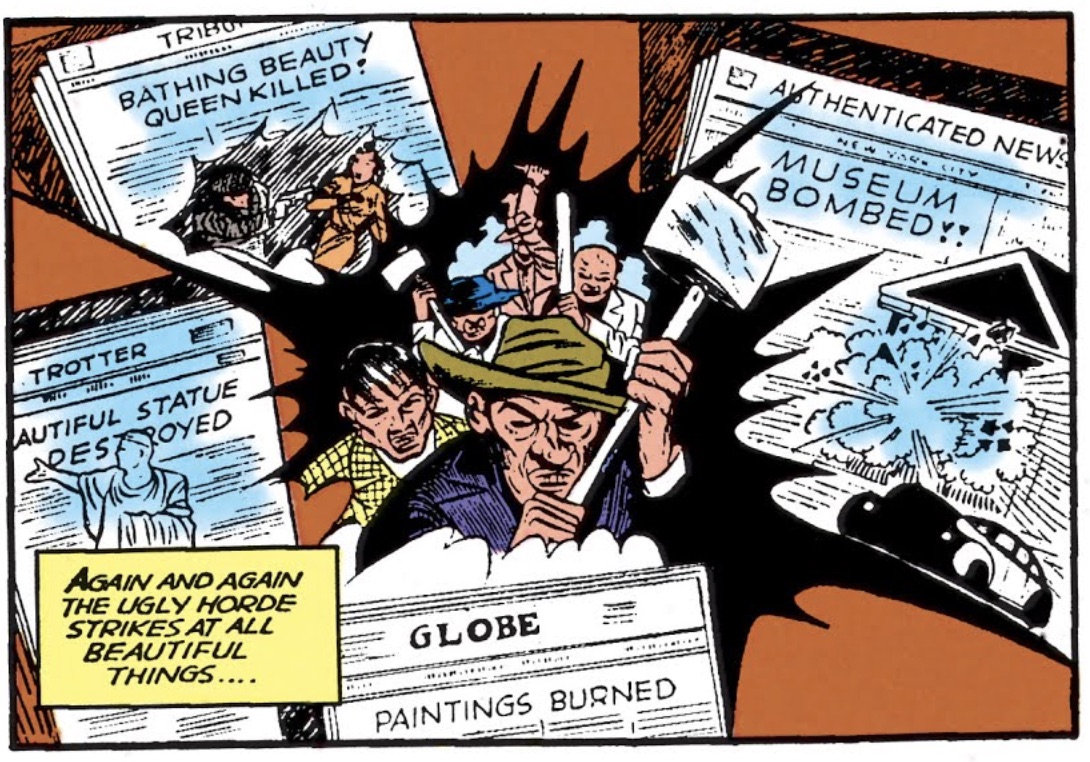
So, why does a guy named Carlson form an ugly mob hellbent on destroying all beauty in the world, gleefully slashing paintings and causing a ruckus? Revenge, of course. When Carlson was a handsome young man, a dicklord named Tyler pulled a prank on him during his frat initiation by filling a hypodermic needle full of whatever chemicals he could find. Even though he only intended to pretend to inject Carlson, whoops, he slips, and the poor fratboy is pumped full of ugly juice. Even Batman is sympathetic to Carlson’s murderous rampage after finding out the villain’s true story; he lost his face, he lost his fiancee, and he lost his mind… and he could have been cured the whole time. Instead, he spent fifteen years developing the ultimate uglifier to turn other people ugly instead of trying to understand and cure his own condition.
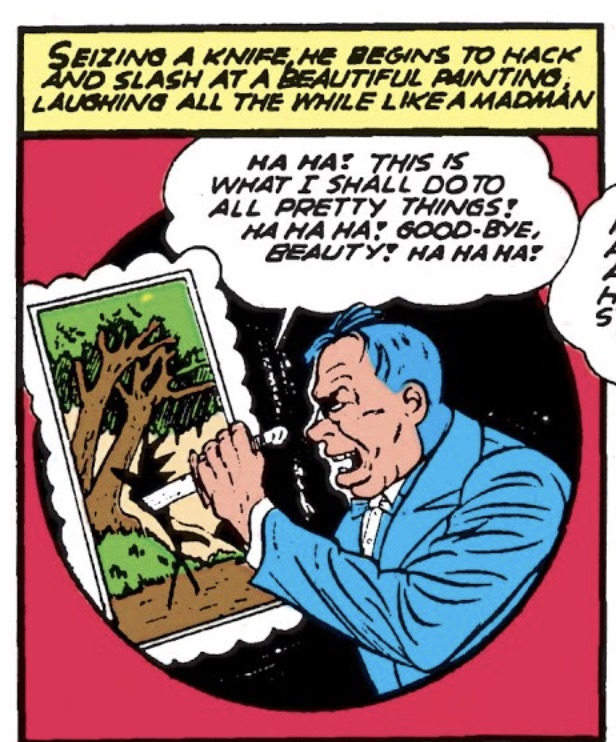
Ugly Man’s master plan is to destroy a beautiful statue as it’s being offloaded from a boat, because every Batman story needs to involve the shipping of rare artifacts. Of course, Batman stops him, with a little unexpected help from McGonigle, who Batman pushes off a pier when the policeman again threatens to arrest Batman. At the same time, it’s announced over the radio that a Dr. Ekhart has discovered the cure for ugly, and it isn’t just a makeover.
Naturally, Ugly Man wants to kill the man who came up with the cure, since Ugly wouldn’t be able to reliably create hideous, rage-fueled minions if a cure was easily within reach. Batman visits the Doctor, who is already under attack by the Ugly Horde. Fighting happens, and the Ugly Horde escapes, but Batman tails them. Robin is left behind, but because of the miracle of fake science, he’ll have no problem catching up with Batman. After all, the Batmobile’s tires are coated with a substance that glows under infrared light. If that sounds familiar, it’s because Batman and Robin also cover their shoes in this stuff in the previous two issues. Anyone with eyeballs and/or a heat ray could follow the Dynamic Duo back to their hideout and kill them in their sleep, no problem. Nobody cares. This is not the suspicious, over-prepared Batman of tomorrow. This is a kid who just discovered invisible ink.

After following the bad guys to their hideout, Batman is knocked out and tied up in a basement, alongside Tyler (his frat days injector) and Carlson’s ex-fiancee… now Mrs. Tyler. Larrimore, Bruce Wayne’s beautiful buddy from earlier, enters the room, and removes his mask. Turns out he was Ugly Carlson all along! Oh snap. And Carlson is going to make them all ugly! it’s then that Robin appears, saves the day, and McGonigle shows up out of nowhere for the second time to shoot Carlson in the back, killing the villain, and making him probably the fifth guy that the cop has killed this issue. History repeats itself, and Batman once again thwarts McGonigle’s attempts to arrest him, marking three times that Batman has assaulted a cop in one issue.

At the end of the day, Bruce and Dick agree that the guys behind the frat prank are the true villains here, and despite Ugly Carlson being incredibly dead, that’s just how it goes.
And then we get Batman’s least-notorious set of villains ever; even less notorious than Clubfoot, Ugly Carlson, and Local Italian Puppeteer. Meet some of the worst villains ever: Pockets and Big Boy Daniels.
As with every other Batman story thus far, the tale begins as Batman is on patrol and notices a gang of well-dressed men up to no good. He fights them, and discovers that one of these guys is actually just a kid.
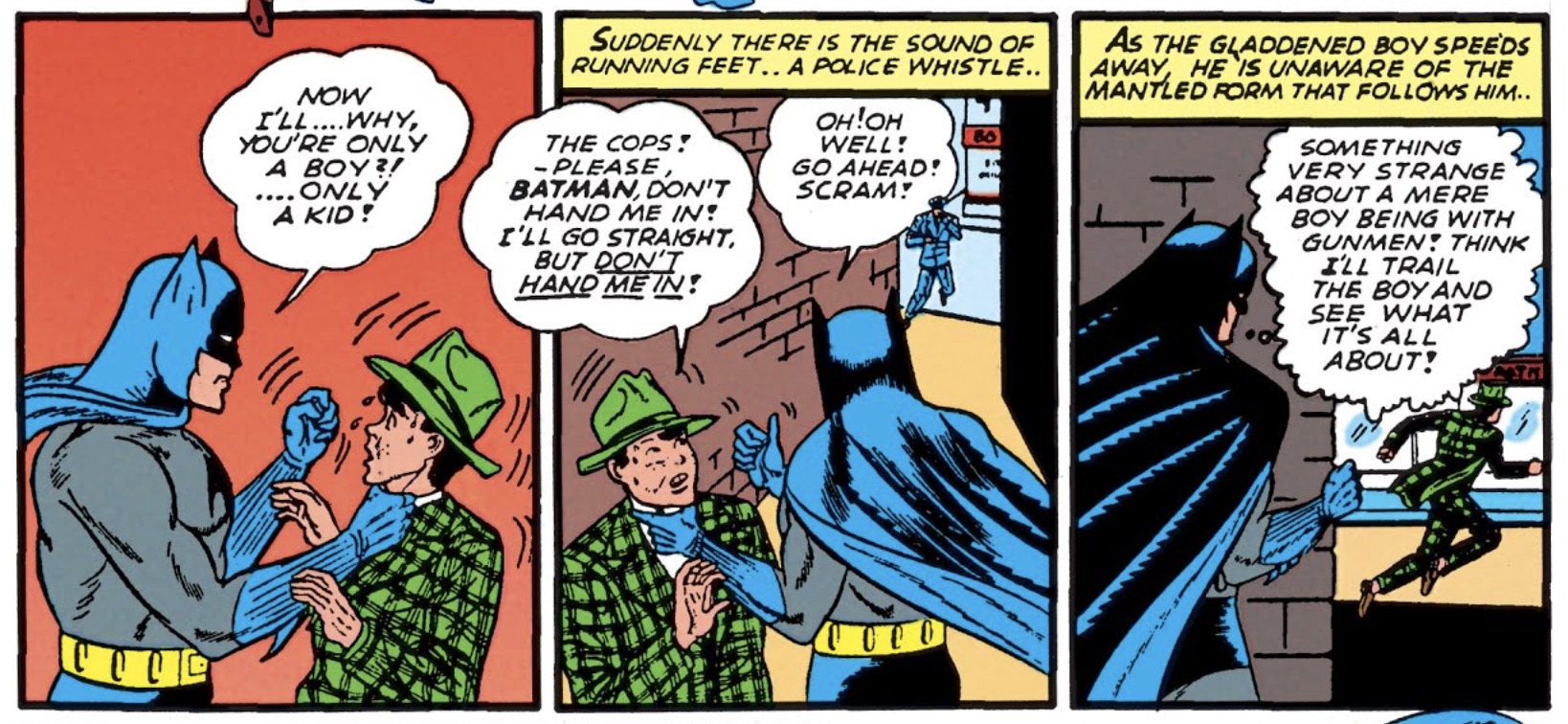
Most teenagers are natural dirtbags, but something is especially off about this troubled youth, so Batman follows him to his warehouse hideout, aka the Crime School for Boys, aka when Montessori schools go off the rails. The school is run by Pockets, a decrepit Roald Dahl-looking dude who teaches kids how to pickpocket, and presumably how to commit every other crime up to and including murder. When the kids are ready, he hands them off to Big Boy Daniels, and despite his name, he isn’t just three kids stacked inside a trenchcoat. He’s a straight up mobster, and these kids are essentially his shield. But, like the world’s worst MLM, these tykes are convinced that this is the best way to get rich and powerful. Batman forms the plan, and it may be one of the worst of his career.
Robin is sent to infiltrate the boy gang, and his methods are questionable.
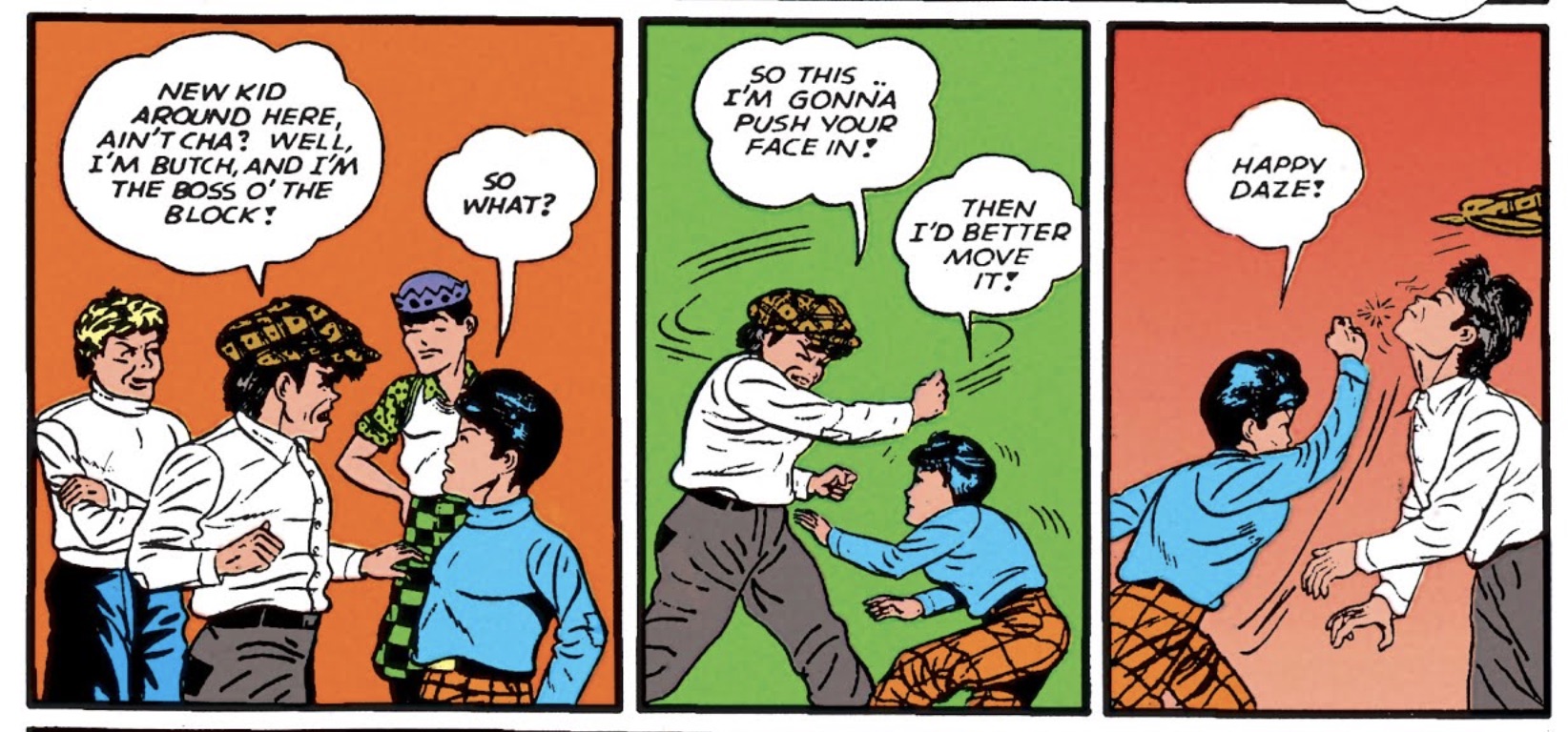
After beating the jujubes out of some of the gang kids, Robin becomes Alpha Boy, and convinces all of them to join Bruce Wayne’s newly-formed Honesty School for Troubled Idiots, aka Batman’s Inner-City Gym. Aside from coating everything he owns in radioactive tracking dust, it’s probably the best use of the Wayne fortune yet… except it doesn’t work. As previously mentioned, most teenagers are dirtbags, and honesty at sports doesn’t translate to honesty at life (see: almost any NFL player). The gym succeeds at nothing but making these kids more agile gangsters.
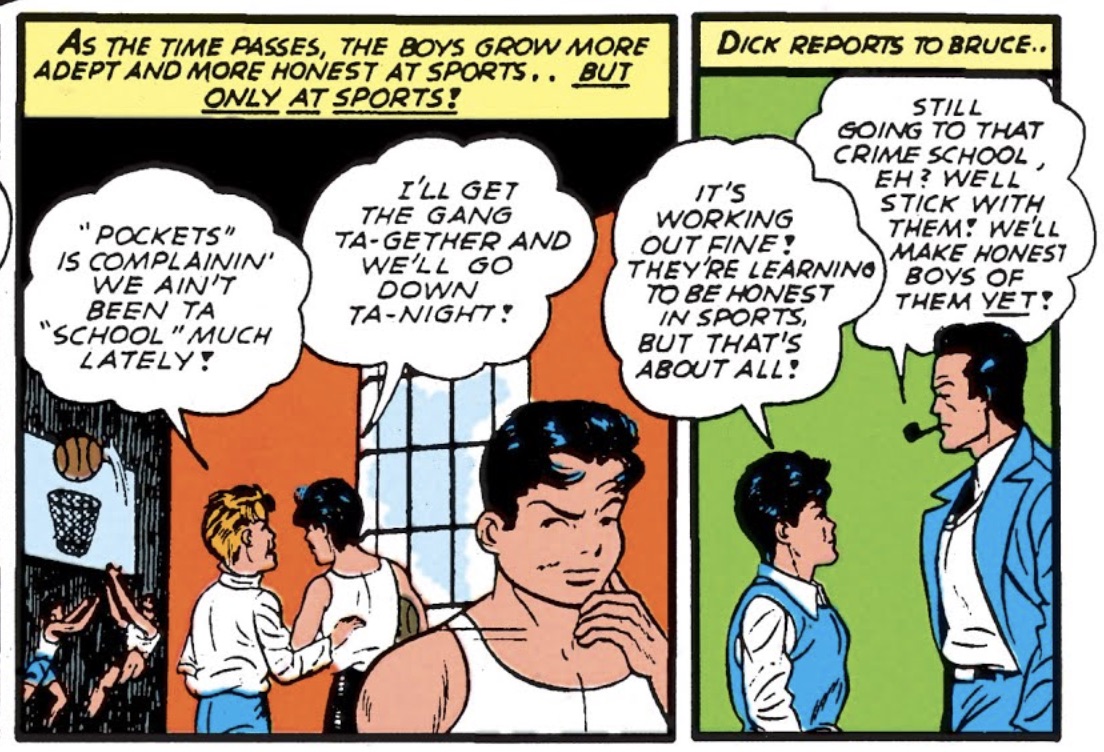
1940s Batman is an optimist who believes that there’s good in these terrible children; modern Batman’s lack of trust in just about everyone is one of his defining characteristics. Who hurt you, Modern Batman? It’s time for a plan B : scared straight.
Robin successfully infiltrates the gang while Batman tails him in the shadows, learning the location of the next Big Boy heists: stealing expensive fur coats and gems. Batman remains one step ahead, thwarting one heist, making terrible jokes, and eventually, threatening to beat a kid to death. All of this, and he still has time to do it a second time.
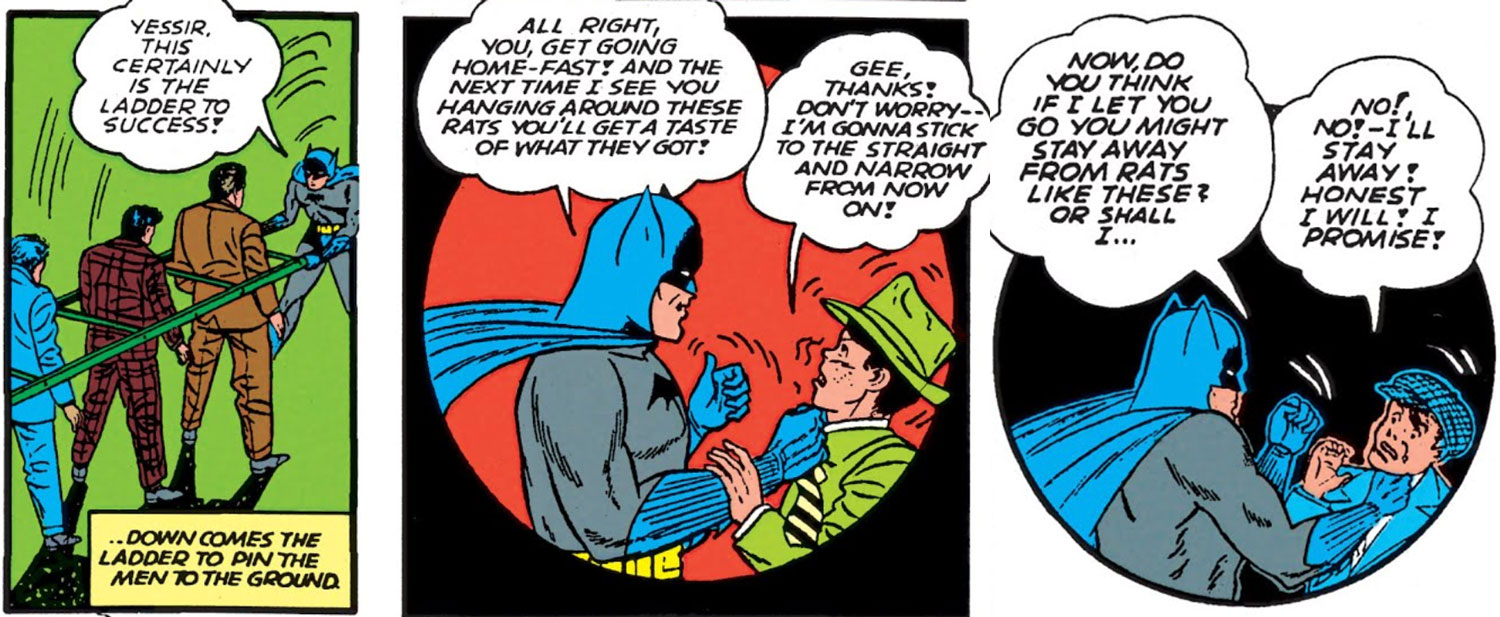
But scaring boys straight one at a time isn’t really that effective either, so Batman plots his most destructive, dangerous, and morally ambiguous plan yet. Batman places a call to Big Boy to let him know that his time is up, name-dropping Pockets, and heavily implying that it’s the decrepit old man who’s been ratting out Big Boy. It only takes one panel for Big Boy to shoot Pockets in front of a group of terrified, fatherless children, and Batman watches from the skylight as it happens. In every sense, Batman commissioned a murder so that he wouldn’t have to get his own hands dirty and he could walk away essentially guiltless.
Batman swoops in and challenges Big Boy to a fistfight, during which Batman literally picks up the gangster by his head. Just hoists him up by his noggin and flips him into the ground. It’s a sight.
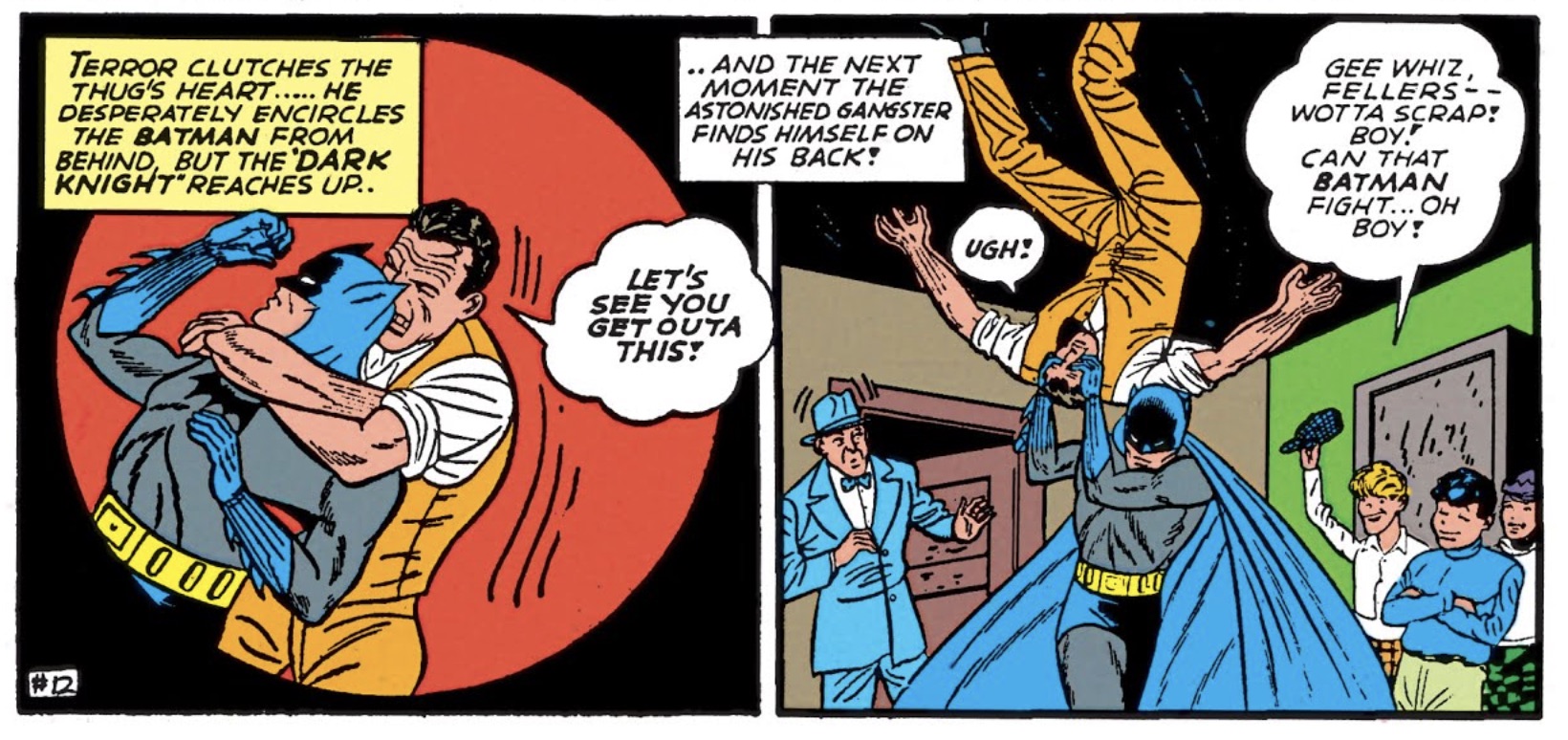 Fearing death and barely avoiding becoming quadriplegic, Big Boy pulls a gun, which convinces the Crime Boys to no longer be Crime Boys, since guns (in this narrative) are for cowards. They turn against the adult mob and somehow beat them into submission; according to the logic of 1940s Batman, criminals are all very weak and can only fight with their guns. In order to be a proper, upstanding citizen, you need to be able to fight with your fists, and pulling a trigger isn’t a proper workout. It’s a weird kind of halfway-there definition of stereotypical masculinity; it’s expressly anti-gun, but values physical strength over most other attributes. Bruce and Dick wrap up the tale by imploring urban areas to keep kids away from crime by building community centers and getting involved in church groups.
Fearing death and barely avoiding becoming quadriplegic, Big Boy pulls a gun, which convinces the Crime Boys to no longer be Crime Boys, since guns (in this narrative) are for cowards. They turn against the adult mob and somehow beat them into submission; according to the logic of 1940s Batman, criminals are all very weak and can only fight with their guns. In order to be a proper, upstanding citizen, you need to be able to fight with your fists, and pulling a trigger isn’t a proper workout. It’s a weird kind of halfway-there definition of stereotypical masculinity; it’s expressly anti-gun, but values physical strength over most other attributes. Bruce and Dick wrap up the tale by imploring urban areas to keep kids away from crime by building community centers and getting involved in church groups.
And hopefully, never again trusting anyone named “Big Boy”.
And finally, we have the return of Catwoman in a fairly forgettable tale which mostly exists to further the mutual romantic interests between her and Batman. It’s “The Batman vs. the Cat-Woman,” and she’s back in a brand new costume : a giant cat mask that looks like it was drawn by someone who’s never seen an actual cat.
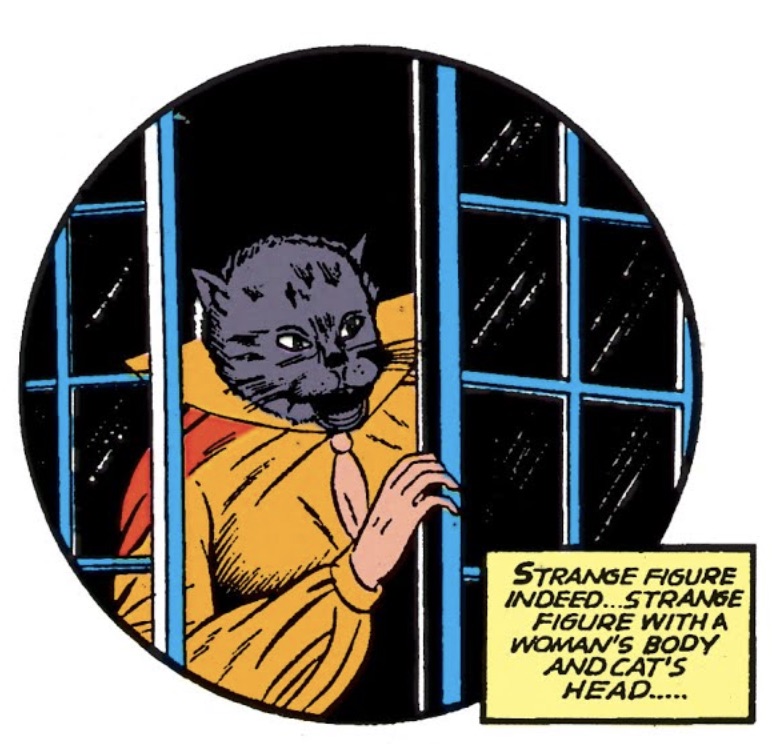 A lot of thematic elements return. Officer McGonigle remains in pursuit of Batman, and actually finds the unconscious hero after a failed tussle with some bad guys. Instead of unmasking him to reveal the well-known “lazy settee-stroking fancyboy” Bruce Wayne, he just handcuffs the Dark Knight and waits for him to wake up, after which McGonigle is once again clobbered by a conscious Batman. We also see Bruce Wayne hanging out with Commissioner Gordon as he investigates a crime again, which has to be hugely unsettling for the victims. Just imagine if Martin Shkreli showed up when the local PD investigated the murder of your grandmother. Not Elon Musk or Richard Branson; those guys might be able to help. Shkreli, the most useless rich guy in town. That has to be a violation of police procedure. But things get worse.
A lot of thematic elements return. Officer McGonigle remains in pursuit of Batman, and actually finds the unconscious hero after a failed tussle with some bad guys. Instead of unmasking him to reveal the well-known “lazy settee-stroking fancyboy” Bruce Wayne, he just handcuffs the Dark Knight and waits for him to wake up, after which McGonigle is once again clobbered by a conscious Batman. We also see Bruce Wayne hanging out with Commissioner Gordon as he investigates a crime again, which has to be hugely unsettling for the victims. Just imagine if Martin Shkreli showed up when the local PD investigated the murder of your grandmother. Not Elon Musk or Richard Branson; those guys might be able to help. Shkreli, the most useless rich guy in town. That has to be a violation of police procedure. But things get worse.
The crime being investigated by Gordon involves a shipment of diamonds coming in for some kind of runway diamond show that sounds completely made-up. Models come out, show off the diamonds on a stage, and we never get to see why; turns out Catwoman is one of the models. She comes out wearing some expensive jewels, throws a smoke bomb (or “magician’s powder”), and runs out the door. Instead of just stealing the jewels when she had access to them backstage. Catwoman is nothing if not a performance artist. She escapes, but is quickly picked up by some dudes, with Batman in pursuit, as usual.
The tale continues to be unremarkable; the “Diamond Syndicate” who owns the jewels is made up of a bunch of tubby old double-crossers who hired Catwoman to steal the diamonds for the insurance money. As far as Batman’s heroics go, thwarting insurance scams has to be the least thrilling adventure of all time. In what reality do we need to protect the big banks from paying out the insurance money that’s paid to them? All of this leads to an actual crime: one member of the Diamond Syndicate wants to kill off Catwoman and some other guy so he can take a larger cut of the insurance money. Because the villains are all gross old guys, they’re quickly defeated, and Catwoman escapes as usual. Robin attempts to pursue her, but again, Bruce Wayne’s bat-boner gets in the way.
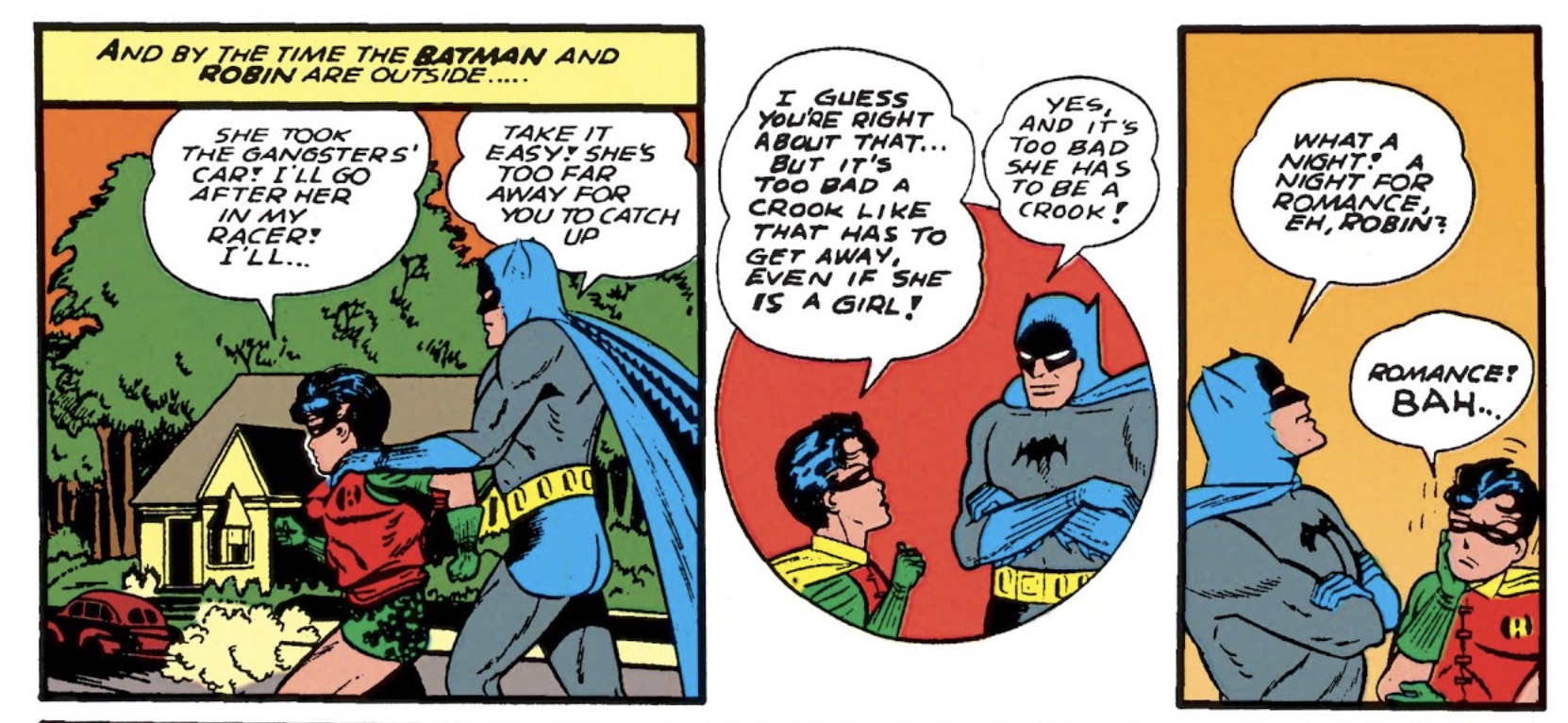
Aside from Catwoman wearing an actual cat-head mask, the most interesting element of this story is the fact that Batman whips out a wireless communicator from his belt, introducing a gadget heretofore unseen in the pages of Batman. Robin also has a wristwatch camera, with which he captures evidence of the diamond douchebags trying to kill each other. And it’s also the first kiss between Batman and Catwoman.
At this point, the sameness of most Batman tales begins to set in. The formula repeats itself:
1) Batman sees crime on patrol or in newspaper. Someone is killed before Batman actually helps.
2) Batman pursues a lead found on or near the body. Someone very rich is involved.
3) At least 2 fights against a gang of thugs.
4) Someone in disguise does something terrible; usually someone we’d met earlier.
5) Batman wins.
Street-level Batman is a great Batman; it’s just that there aren’t too many urban crimes or criminals that are that interesting. All of their motivations lean towards avarice, and sometimes, revenge. It’s a young, carefree Batman with flaws, who often loses fights with completely average people, and who will eventually be scarred by the weight of the world more than he ever was by the death of his parents. But for now, during a simpler time, a surprise kiss from a villain is enough to keep Bruce Wayne warm at night.
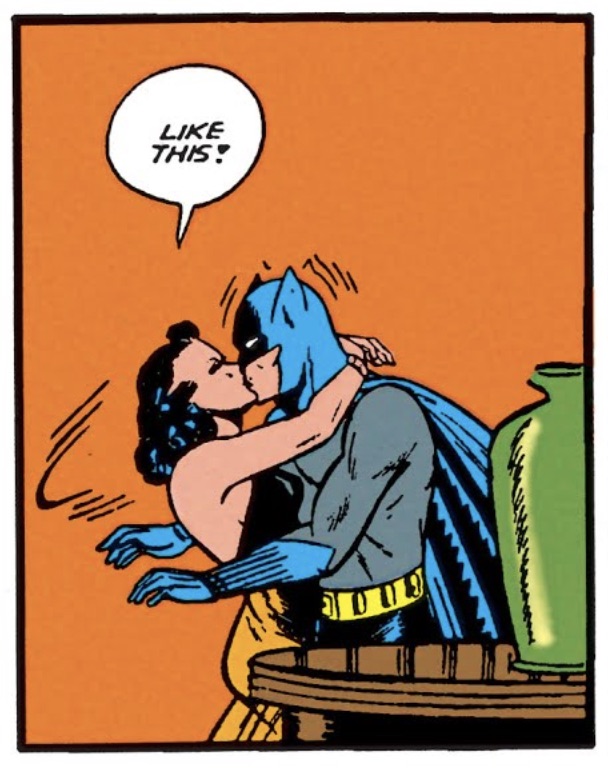
All comic images are copyright DC Comics and presented here for the purposes of criticism & commentary.
 C. David is a writer and artist living in the Hudson Valley, NY. He loves pinball, Wazmo Nariz, Rem Lezar, MODOK, pogs, Ultra Monsters, 80s horror, and is secretly very enthusiastic about everything else not listed here.
C. David is a writer and artist living in the Hudson Valley, NY. He loves pinball, Wazmo Nariz, Rem Lezar, MODOK, pogs, Ultra Monsters, 80s horror, and is secretly very enthusiastic about everything else not listed here.
